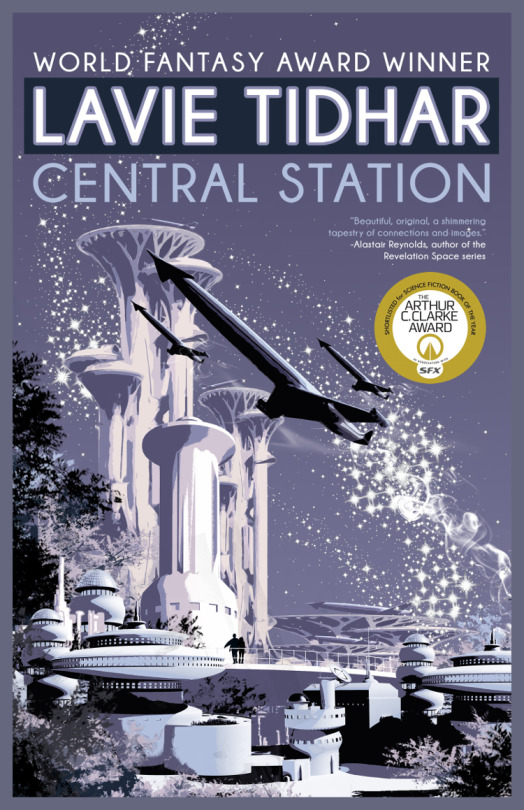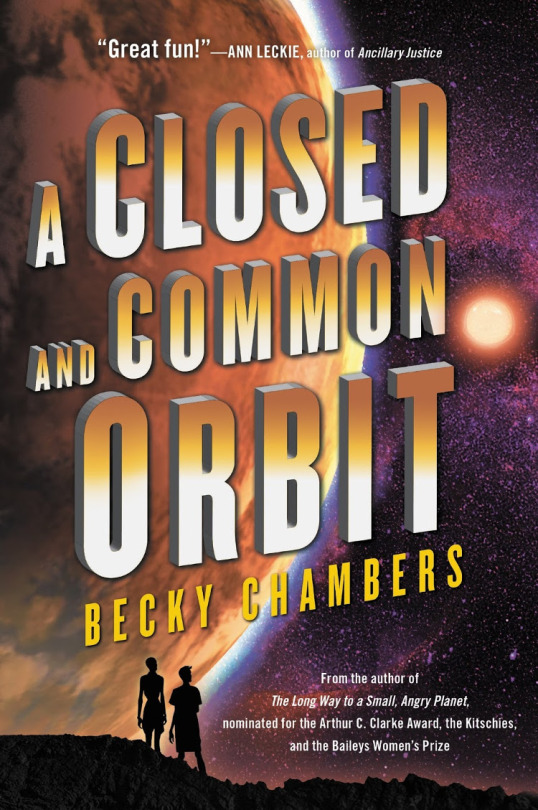Lavie Tidhar’s CENTRAL STATION is traditional and inventive at the same time
A pair of fresh reviews of and announcements about Lavie Tidhar’s Clarke, Campbell, and Locus award-nominated CENTRAL STATION.

For THE ANGLIA RUSKIN CENTRE FOR SCIENCE FICTION AND FANTASY, Paul Kincaid praises Lavie Tidhar’s interesting and subversive novel.
Of course, no one has gone broke by playing to the geeky self-regard of the science fiction fan. In recent years, self-referential science fiction books, novels like AMONG OTHERS by Jo Walton that deliberately draw attention to other science fiction works, have proved especially popular. Fans do like to think of themselves as slans, and any book that tells them their favourite reading is not just literature but a key to something real is bound to go down well. And Tidhar has been one of many to write books in which a familiarity with other science fictions is the key to understanding what is going on. But here, although such intertextual references are scattered with gay abandon throughout the book, I think Tidhar has more control over the material and uses it for more interesting and more subversive ends.
Writers of what I suppose we might call the Chrome Age of science fiction, the Moores and Smiths and their contemporaries, were in love with the glittering hard surfaces of their futures simply because they were the future. Their characters were excited by the wonders with which they were surrounded simply because they knew, in their heart of hearts, that they were in the future. The characters were avatars for the readers looking in from the outside and thinking: wow, what a spectacular time to be. But people never live in the future. We all of us live in a permanent present, a present that advances at a steady rate of one second per second and yet somehow never actually becomes the future. There are novelties in our present, but they are never consistently distributed and they become familiar very quickly; while the past, which is forever slipping from our grasp, remains for most of us more familiar, more comforting, more enticing.
<snip>
And just as the characters are tied to their pasts, so is the setting. This is Tel Aviv, that liminal city where Israeli super-modernity butts up against the Palestinian present of Jaffa. In this novel the Arab-Israeli conflict does not intrude and is apparently a thing of the past (a map at the beginning of the novel refers to the “Judea Palestina Federal Union”; that is all we are told of the resolution of what seems to be an increasingly bitter dispute), but in every other respect Tel Aviv remains liminal. The multi-storey, high-tech Central Station where silver ships set sail for the stars or bring home passengers who have walked upon other worlds, occupies roughly the location of Tel Aviv’s present-day Central Bus Station. It looks futuristic, but it’s a workaday place, as ordinary and, we presume, as scuffed and marred, as any bus station today. And the moment you step outside this would-be futuristic edifice you are in hot, dusty, narrow streets that would presumably be familiar to anyone walking around that quarter of Tel Aviv today. The future works, you can indeed travel to the stars or employ robot workers just as those old science fiction books promised; but here in the streets right outside Central Station you will encounter people who do not take part in that future because they have no interest or no funds. This is a world of crumbling infrastructure (because our infrastructure is always crumbling), a world of making do and getting by. Inevitably, this is as much the future as the chrome and glitter, but it is not the future that science fiction promised us.
Fittingly, Tidhar takes us into this future through the model of a fix-up, a form that was once ubiquitous in science fiction, that once carried to us such varied glimpses of the future as Isaac Asimov’s FOUNDATION or Clifford Simak’s CITY. It’s a form that has fallen out of favour (the most recent I can think of is ACCELERANDO by Charles Stross, another picture of a glittering future), but it works perfectly here. There are stories that are carried across several of the constituent parts, but there is no single, over-arching story. Rather, what we get is a kaleidoscopic view of people and events moving in and around the landmark that is Central Station. (Revealingly, the term that Keith Roberts coined for a fix-up was “mosaic novel”, a term that seems highly appropriate for what Tidhar is doing here.) It’s a story of the future that isn’t about the future; it’s a self-referential work of science fiction that is critical rather than unquestioning in its regard of the form; it is traditional and inventive at the same time.
I have always believed that what the Clarke Award should recognise is work that builds on the science fiction of the past, but then takes it in new directions to show that the form is still capable of value and innovation. The Clarke Award should not be about repeating the past, doing what science fiction has always done, however nicely it may be managed; but rather, it should demonstrate that science fiction is still a living, breathing, changing, innovating, challenging form. If novelty is one of the key characteristics of science fiction, then the award should look for work that is constantly making science fiction anew. Which is precisely what I think Tidhar has achieved here.

Photo: Kevin Nixon. © Future Publishing 2013
Adrian Tchaikovsky at SHADOWS OF THE APT pens a joint review of CENTRAL STATION and Becky Chambers’ A CLOSED AND COMMON ORBIT.
Lavie Tidhar is already a decorated author with a World Fantasy Award under his belt, among others. I first came across him with his steampunk fantasy BOOKMAN series, which has a pleasant quota of insect-like things and a glorious collusion between Dr Moreau and Dr Pavlov. More recently he has become known for writing weirder stuff – OSAMA, A MAN LIES DREAMING and the Superhero/espionage THIS VIOLENT CENTRUY which was my personal favourite. CENTRAL STATION is a fascinating glimpse of a sort of “future that never was” in the same way Gibson’s NEUROMANCER and sequels is.

I had read A CLOSED AND COMMON ORBIT before the shortlist, and coming to CENTRAL STATION after I was struck by how complimentary the two books are, and how similar their concerns. As well as the very street-level focus and the willingness to simply let their characters live, both books depict a future that is, despite all the trials and tribulations of the people involved, fundamentally optimistic, which is something of a rarity these days. Neither is about the super-powerful or the super-rich swanning about bleeding luxury, and neither is about a post-scarcity Banksian world where everyone can have everything (though the Chambers is closer), However, even taking into account the failing Robotnik cyborgs and the existential crisis of the robot clergyman R.Brother Patch-It, or Lovelace’s illegal status and the exploitative past of Pepper, both books envisage a future where we have at least Got There. We’re out in space, making and/or meeting wonderful things. Right now, looking at the world, we should be so lucky as to have a future like that.
Forbidden Planet is offering a Signed Mini Print Edition of Central Station. Each book comes complete with an original artwork mini print – signed by Lavie Tidhar and designer Sarah Anne Langton! This edition is limited to 100 copies.

For limited time, CENTRAL STATION has returned to NETGALLEY so reviewers and librarians can experience the acclaimed work first hand.
For more info about CENTRAL STATION, visit the Tachyon page.
Cover by Sarah Anne Langton
